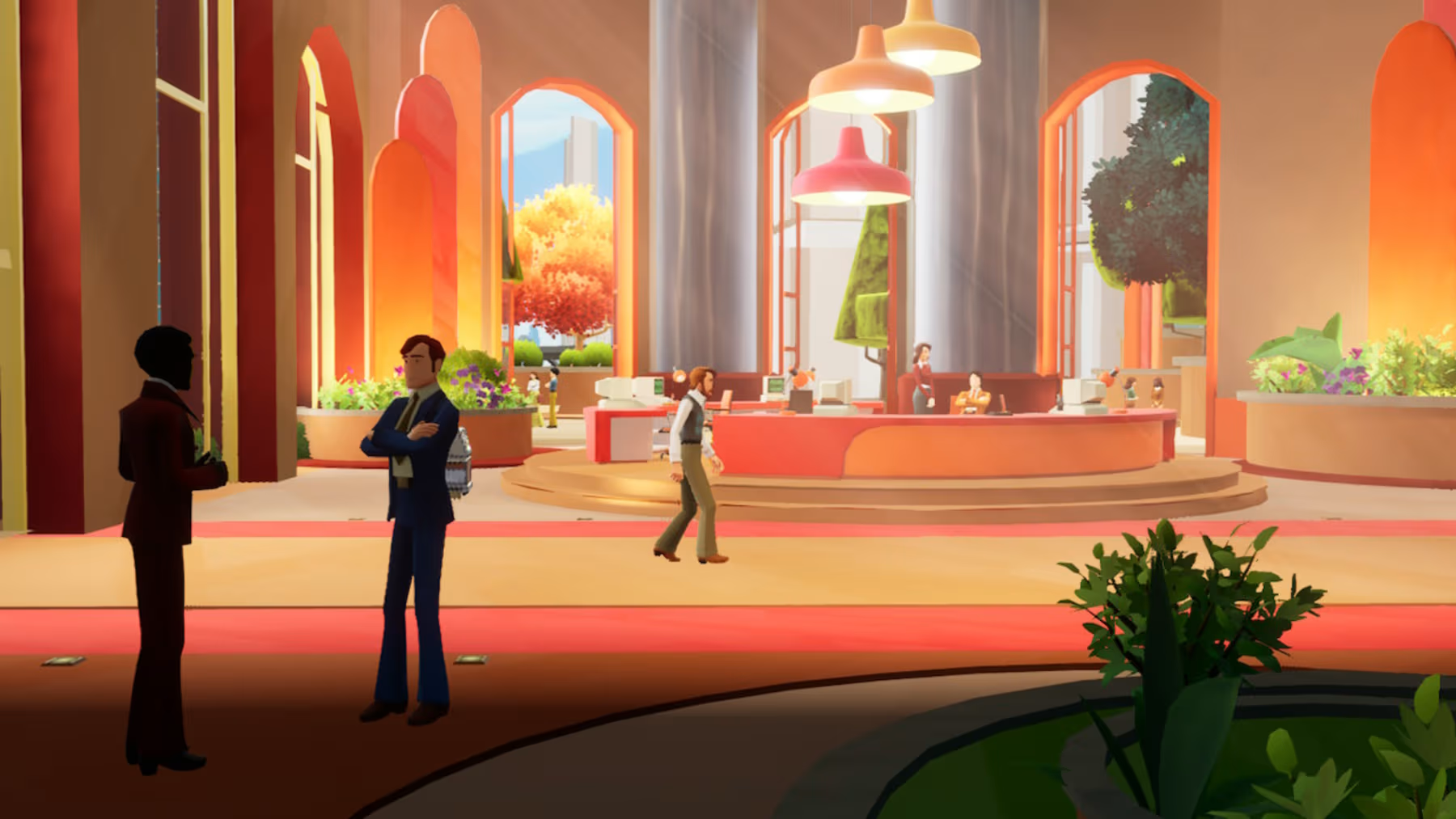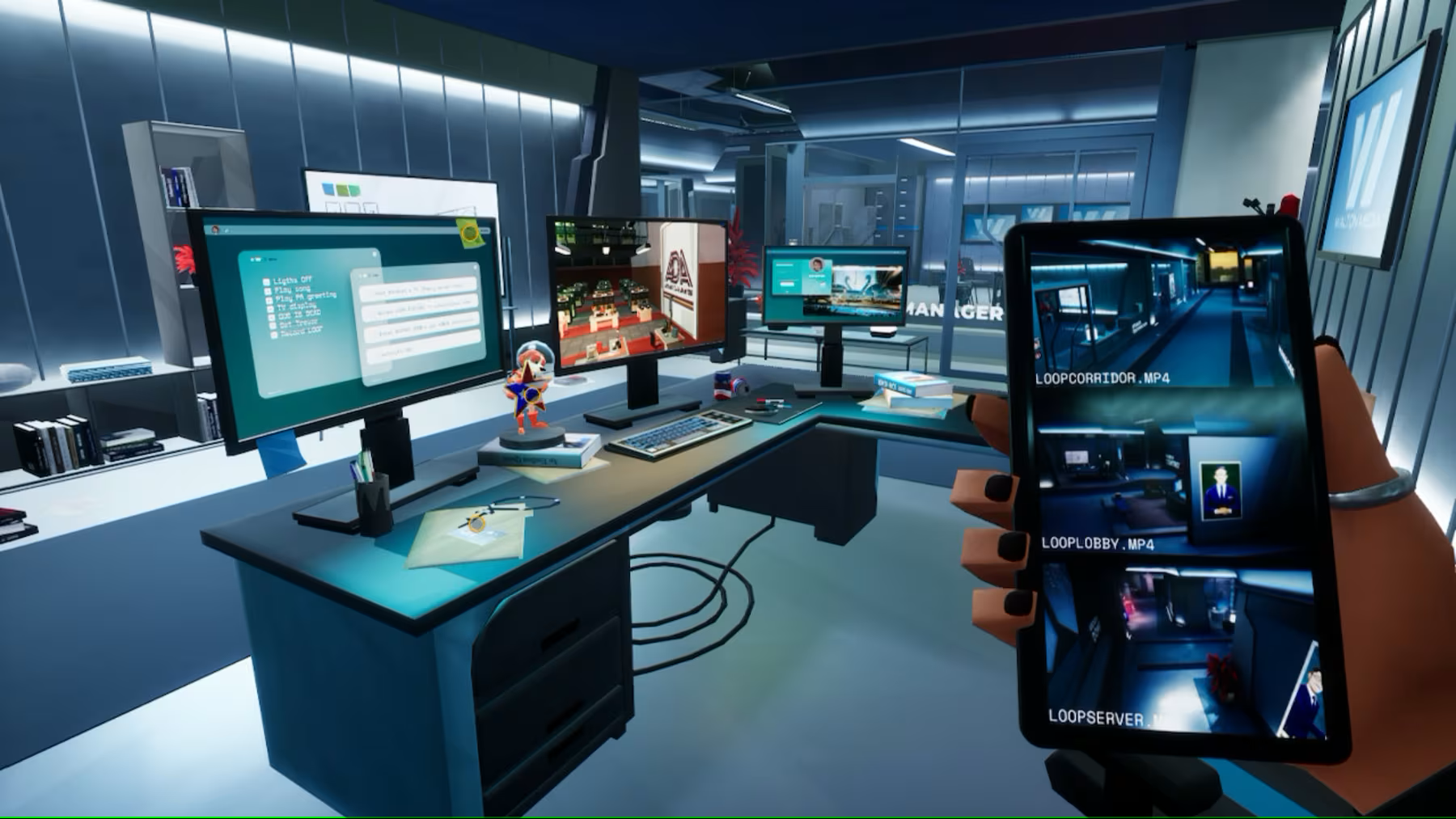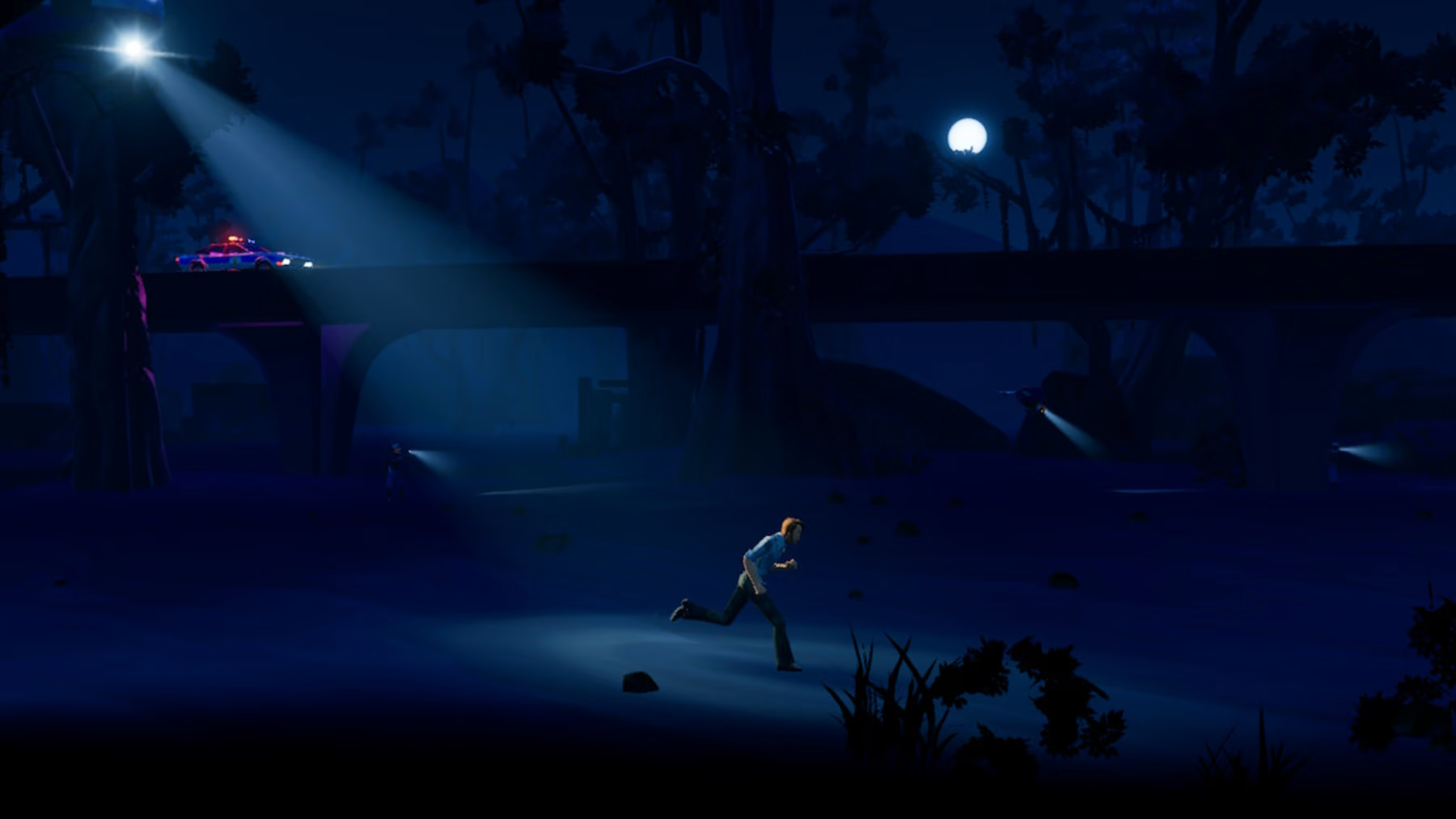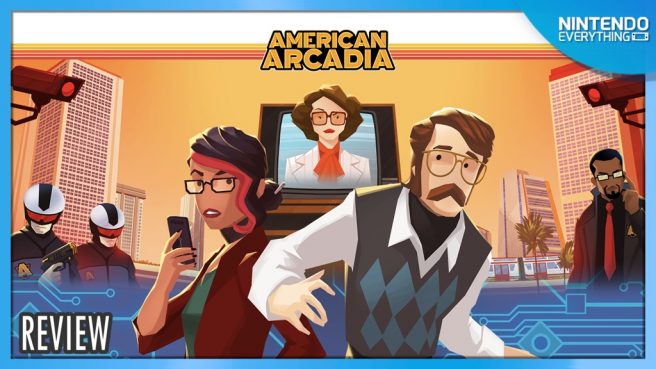American Arcadia review for Nintendo Switch
System: Switch
Release date: May 15, 2025
Developer: Out of the Blue Games
Publisher: Raw Fury
What if Walt Disney created the Truman Show? And what if instead of following the life of one man, it chronicled the lives of an entire city? What if the audience could pick and choose which citizens to watch, vote for their favorite “characters,” and create entire social media followings for unassuming victims just living their lives? What if the company running this insulated city could track which of its citizens were the most popular? How far would the company go to maximize their profits, and what might they do to cut costs when certain residents fail to garner any audience attention at all? These questions lay the groundwork for Out of the Blue Games’ American Arcadia.
The hero of our tale is an introverted office worker named Trevor, the least popular person in Arcadia. The game opens by giving us a glimpse into Trevor’s day-to-day life, showing him getting up, feeding his pet turtle, begging off social engagements, and working diligently at his impossibly boring (and ultimately meaningless) data entry job. A literal “walking simulator” if ever there was one. In fact, the only thing that endears Trevor to the player is that we’re in control of his actions ourselves.
After a few truncated repetitions of this routine, however, strange occurrences begin to disrupt Trevor’s everyday life. A coworker disappears on a mysterious, unplanned vacation. Technology glitches out in Trevor’s vicinity. Strange music plays all around him, warning him that he’s being lied to. About what… well, we already know. But Trevor is only about to find out.

The reveal comes when the person causing these technical disruptions finally contacts Trevor directly. Nicknaming herself Kovacs, the hacker reveals that the people running Arcadia plan to “retire” Trevor the same way they did his coworker – by killing him. Their justification? An entirely legal cost cutting measure, pruning their proverbial flock of human property.
From here, the gameplay carries on in three distinct modes. In the first mode, the player takes control of Trevor, navigating him through the city of Arcadia, looking for a means of escape. Sometimes this means sneaking past security and ducking into air vents. Other times it means engaging in a frantic chase across city streets and atop buildings to evade capture. Controlling Trevor is the most familiar mode of play the game offers – basic puzzle platforming with a dash of the frenetic from time to time.
The second mode of play centers around Kovacs, the hacker. By pressing the right thumb stick, the player’s view of Trevor switches from a traditional side angle to the viewpoint of the city’s many security cameras. In this view, the player can interact with various bits of technology to help Trevor on his journey – unlocking doors, blocking roadways, clearing obstructions, or giving Trevor light in dark places. Often, you find yourself switching between multiple camera angles, giving specific sequences of commands to provide Trevor with key equipment or routes of escape. The solutions to these puzzles can at times be unintuitive, as the game doesn’t always take the time necessary to introduce simpler versions of scenarios before throwing you into something more complex.

The final gameplay mode puts the player directly in control of Kovacs herself, from a traditional first-person viewpoint. During these segments, Kovacs will need to leave the comfort of her computer monitor to solve problems in the real world. These sequences usually take the form of puzzle-oriented interludes after Trevor makes a particularly daring escape. Players will find themselves wandering a limited 3D space, looking for clues on how to solve the problem at hand, in a way that sometimes feels a bit more like a pixel-hunt than an actual 3D adventure. Of the three gameplay modes, I found these portions the least enjoyable, as the solutions really are often just a matter of combing the world inch by inch looking for a macguffin to progress forward. Some of these are downright egregious, seriously hurting the pacing of the game.
At face value, each of these gameplay modes offer their own strengths and weaknesses, but the real creativity of American Arcadia is in how they interact. Because you’ll spend most of the game playing more than one mode at a time.
Most frequently, players will control Trevor as he navigates some rooftop or abandoned warehouse while also being on the lookout for devices Kovacs will need to activate from afar. The player will be able to continue to control Trevor with the left-stick while triggering electronics with the right, passing their attention back and forth between tasks and tracking Trevor’s movement from various camera angles. Other times, you may have to quickly remove an obstacle from Trevor while he’s on the run, requiring quick reactions and (unfortunately) repeated tries to bypass tricky moments. These moments can vary wildly from thrilling to excruciating and back again within a single escape scenario.

There are even scenarios in the game where you’ll find yourself in Kovacs’ first person view while still in control of Trevor – as seen on Kovacs’ computer monitor. These moments are particularly engrossing, as players feel the same sense of anxiety Kovacs must be experiencing, having to pay attention to both NPCs in the real world and Trevor’s movements at the same time.
Blessedly, the game has a generous checkpoint system that rarely drops you too far back when you make a mistake – which will be frequent in certain areas.
All told, it’s the narrative that really drives the engine of this game, more than its gameplay. The world of Arcadia is masterfully imagined, both charming and unsettling, drawing inspiration from the best of real world science fiction stories and imagineers. As the narrative unfolds, secrets about Arcadia and the people employing Kovacs are revealed, providing a riveting tale from start to finish. And while game elements are not always perfectly executed, the ability to immerse the player in the story most certainly is.

While American Arcadia is not without its rough edges – particularly in the first-person segments – it’s still a game lovingly crafted and creatively inspired. If you don’t mind a few frustrating moments, you’re in for a fantastic story that will keep you entertained from start to finish.
American Arcadia copy provided by the publisher for the purposes of this review.
